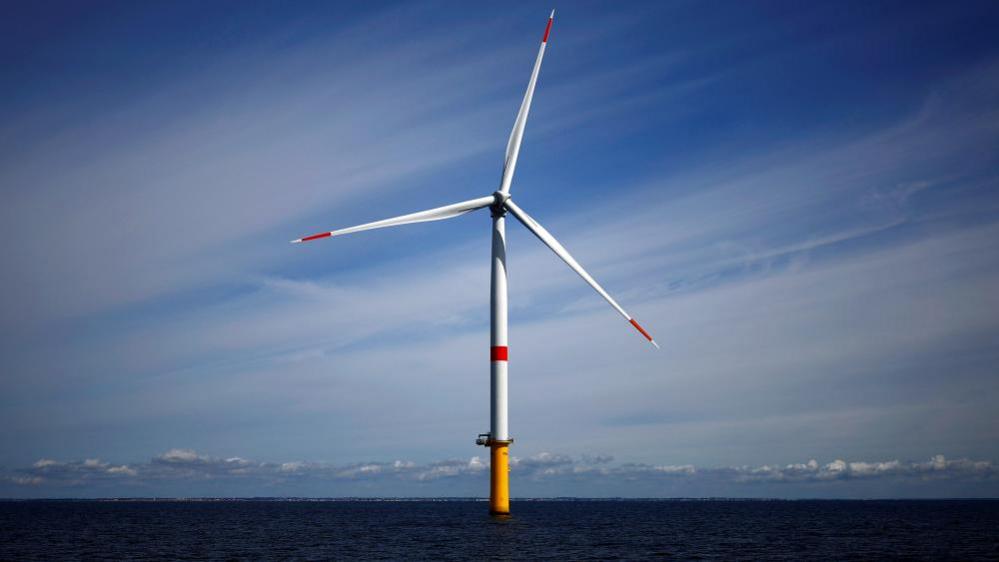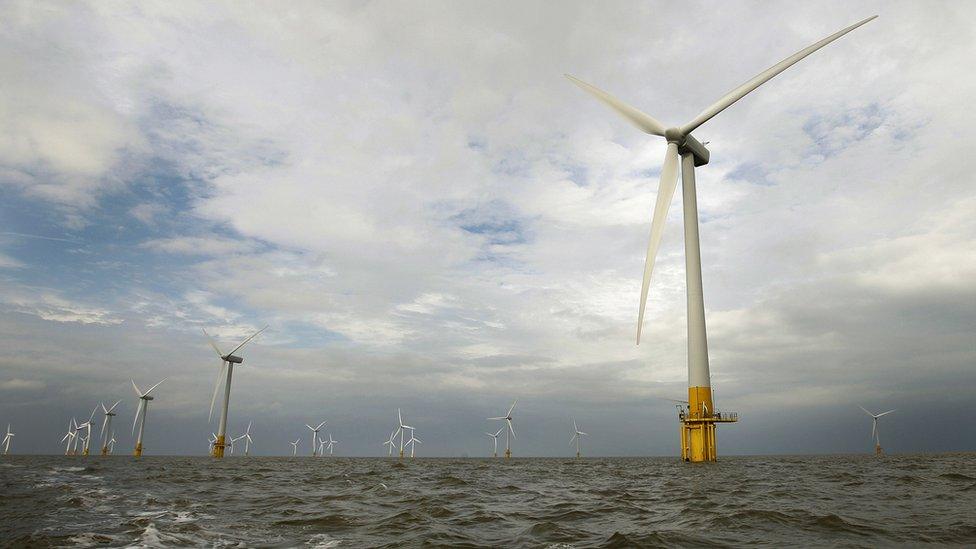Offshore wind farms' energy output to increase

The Norfolk Offshore Wind Zone consists of two farms, the Vanguard and the Boreas
- Published
An offshore wind farm project is increasing its capacity to provide power to 700,000 extra homes, the company behind it said.
The Norfolk Offshore Wind Zone consists of two farms, the Vanguard and the Boreas.
Energy company Vattenfall said it was possible by using more powerful turbines, but fewer of them.
The project's director, Rob Anderson, said there would be "no additional impact on residents".
The two wind farms that make up the project were granted planning permission by the government, which said there was a "pressing need" for renewable sources.
Vattenfall said the capacity of the zone would be increased to more than 4.2-gigawatts, meaning that an additional 700,000 homes would be powered, taking the total to 4.6 million.
The company said it would be one of the largest offshore wind zones in the world when built.
Alterations to the turbines allowing for the increased capacity were classed as "non material changes" to the original planning application, the company said.
"In fact, offshore, using fewer, larger turbines results in environmental benefits overall, including over the lifetime of the project," Mr Anderson said.
The director added it would provide "clean energy while turning the region into a powerhouse of renewable energy".
Consent for the Vanguard wind farm was originally given by the government in July 2020.
That was quashed by High Court judge Mr Justice Holgate in February 2021, but reapproved by the government earlier this year.
Consent for Boreas Offshore Wind Farm was granted in December 2021.
Find BBC News: East of England on Facebook, external, Instagram, external and Twitter, external. If you have a story for us, email eastofenglandnews@bbc.co.uk, external
Related topics
- Published7 July 2022

- Published17 February 2022

- Published11 February 2022

- Published10 December 2021
